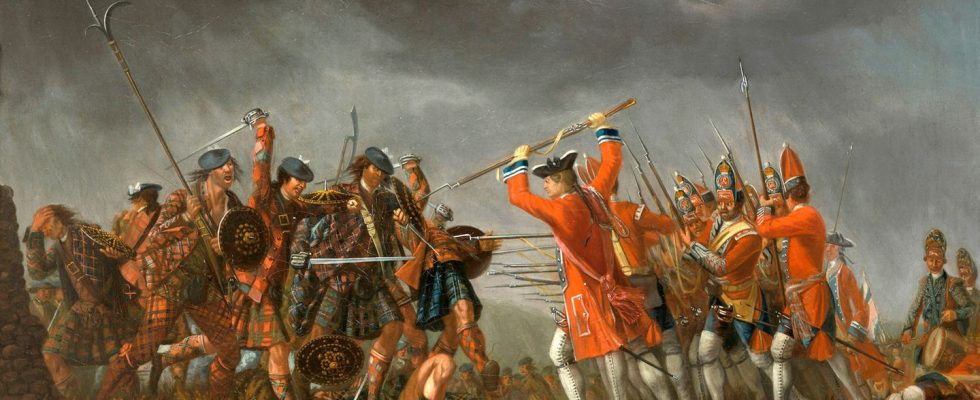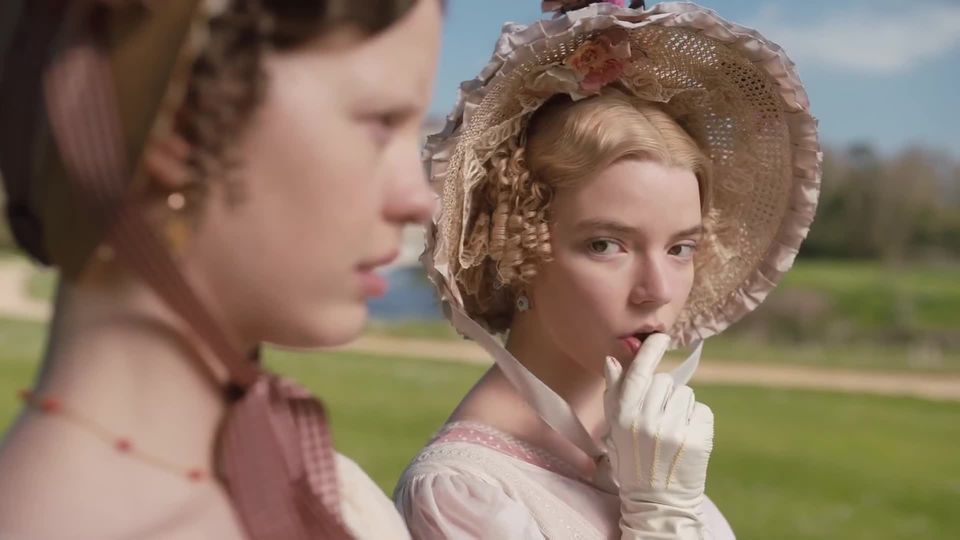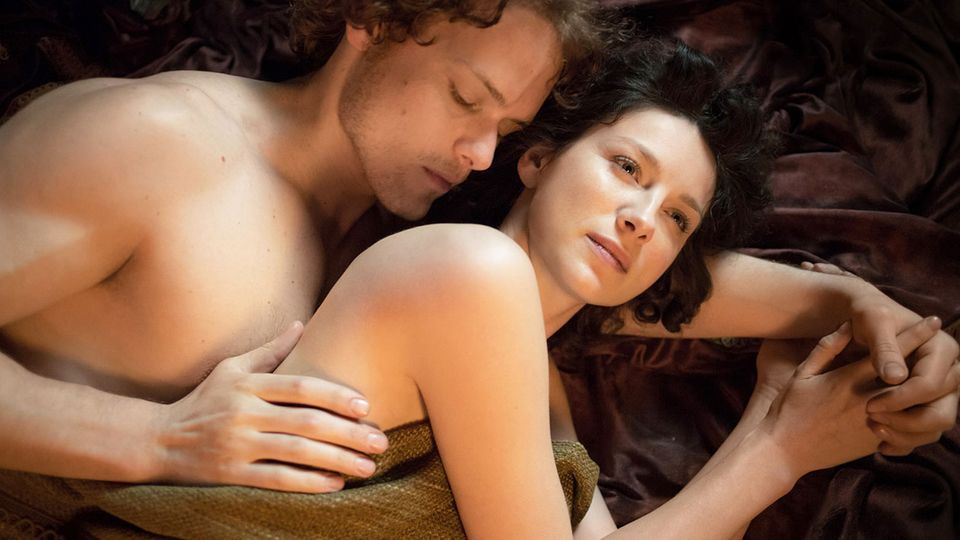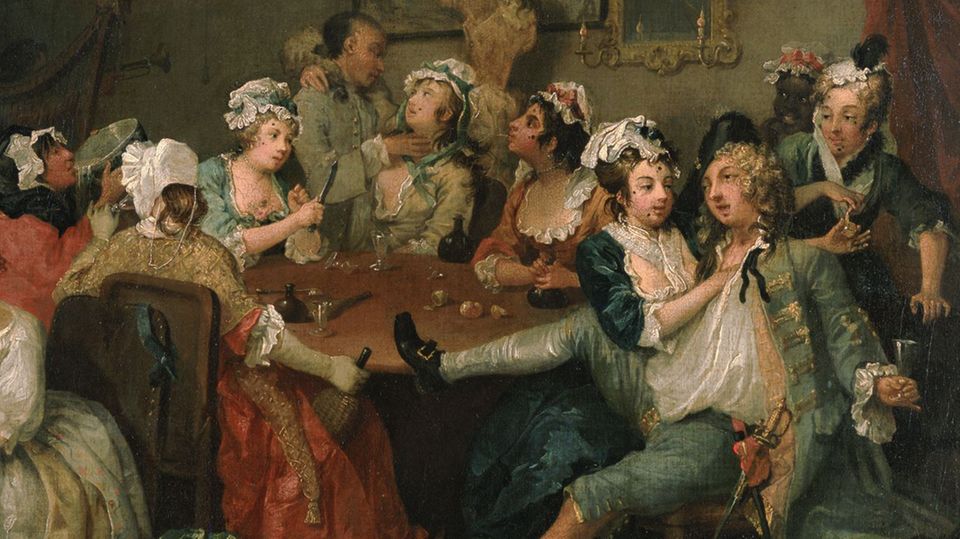Highlander
Battle of Culloden – this is how bloodily the British annexed Scotland
After the Battle of Culloden, the English systematically destroyed an entire culture (“The Battle of Culloden, David Morier, 1746).
Culloden is the last battle on British soil. The last Scottish uprising was shot down here. The British then covered the Highlands with murder and terror – they deliberately destroyed the culture of the Scots.
Most Germans are probably familiar with the Battle of Culloden from the romantic time-slip series “Outlander”. In the TV opera, Second World War medic Claire falls into Scotland in 1743 and promptly falls in love with Highlander Jamie. The passionate love is overshadowed by her knowledge of the future: she knows that the world of the clans will collapse in the fire of the English army on the field of Culloden in 1746 (“Outlander – Women need strong men”).
In the United Kingdom and the debate about Scottish independence, the battle is of eminent political importance because it was here that London bloodily suppressed the last attempt at Scottish independence on April 16, 1746. The battle and the subsequent merciless oppression of the Scots left their mark. Because the victorious royal family wanted nothing less than to wipe out an entire culture.
Hatred that never went away
Paul O’Keeffe tells the story of the last major battle on British soil. O’Keeffe is a tremendous storyteller and he has found a way to put a different spin on stories that have been told a thousand times. As in his Waterloo book, he focuses not on the fighting but more on what came after.
The basic perspective is conventional. O’Keeffe follows the pretender to the throne, the only 24-year-old Charles Edward Stuart – the grandson of the deposed Stuart monarch James II. In the summer of 1745 he lands on the Outer Hebrides with only seven men and challenges the royal family in London. He had with him at least 1,500 muskets, 1,800 broadswords, 20 guns and a war chest of 4,000 gold pieces.
The radiant youth – “Bonnie Prince Charlie” – caused the Highland clans to rise up and has preoccupied romantic souls ever since. “I’ve come home, sir… If I can just get a hundred good, stout, honest-minded fellows to join me, I’ll give it a try,” he declared as he landed.
A company that could only fail
Thousands joined him and his bold campaign. Ultimately he had to fail – without reinforcements, without an industrial base and without allies who could have sent real troops. The peculiarity is not that his wild troops went down in Culloden, still armed with shields and the traditional claymore sword, but that they had been able to inflict such hardship on the British beforehand.
At Prestonpans, 2,500 Highlanders defeated a somewhat smaller government force under Sir John Cope. The Crown’s infantrymen were poorly trained and undisciplined. At the first onslaught their ranks broke and the soldiers tried to escape. They were wiped out in just ten minutes. “The blows that the Highlanders dealt with their swords,” said an eyewitness, “testified to their strength; not only the hands and feet of the men were severed, but even the legs of the horses.” The clans also defeated General Henry Hawley’s army at Falkirk. But this time a few regiments held out and covered the retreat of the defeated army. “My heart is broken,” Hawley wrote; he is said to have broken his sword in anger.
The “Butcher” rules Scotland
But the time for easy victories and overconfident opponents was over. As with many uprisings, time played into the government’s hands. The new commander, the Duke of Cumberland, raised the morale of his soldiers and found new tactics to counter the onslaught of the wild Clan warriors. Cumberland was not a military genius, he was a battle-hardened officer and a thoroughly unscrupulous man. Above all, he knew the tactics of the Highlanders. He knew how to withstand her famous charge. In close combat, the Highlanders used their small shield to deflect the pike and bayonet of the man opposite, and then killed him with one blow of the short broadsword. Cumberland trained his soldiers not to stab the immediate attacker, but rather to always hit the man to his right, on his unprotected side.
The charging Highlanders had no chance. The artillery had already decimated the weakened troops. “Our soldiers,” wrote a British officer, “were rendered beyond the reach of the swords by the new exercise; and the rebels, as they pressed forward, fell to certain death. Ours killed at least ten men in an act of their own.” Within half an hour the battle was over and “unresisted, defenseless slaughter” was underway.
Comfort in drunkenness
After the battle, Cumberland massacred the prisoners, and many are said to have been burned alive. The book isn’t called “Battle and Aftermath” for nothing. Paul O’Keeffe looks at the consequences of the last pitched battle on British soil. He tells how the Duke of Cumberland went from hero and savior to “The Butcher” in the public consciousness. Because even after the battle, Cumberland continued to rage. His troops murdered, raped and pillaged. The stated aim was to destroy Gaelic culture and the clan system. But awareness quickly changed. While the Highlanders were just uncivilized barbarians, the beginning of Romanticism transformed them into noble savages. The British were no longer seen as the heralds of civilization, but were seen as the brutal oppressors that they probably were. In the series “Outlander” the romantic vision of the lost Highlands still shines through today.
O’Keeffe follows the fall of the handsome prince. After Culloden he was never able to raise an army again. He wandered around the country for five months. None of the poor peasants who hid him betrayed the prince, even though the British had placed a huge bounty of £30,000 on his head. Bonnie Prince Charlie fled to France in September 1746. The last Stuart died a broken alcoholic and left no heir.
Source: Culloden: Battle & Aftermath, Paul O’Keeffe
Also read:
Outlander – Women need strong and willing men
Not demure: in the 18th century, one in five Londoners had syphilis
Jane Austen’s wild sister – the journey of “John Bull”
Netflix series Bridgerton – Daphne has to make her way into life with cleverness and cleavage





